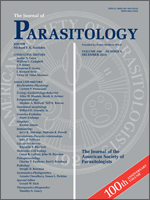Leishmaniasis, a disease caused by parasites of the Leishmania genus, constitutes a significant health and social problem in many countries and is increasing worldwide. The conventional treatment, meglumine antimoniate (MA), presents numerous disadvantages, including invasiveness, toxicity, and frequent therapeutic failure, justifying the attempts at finding alternatives to the first-line therapy. We have studied the comparative long-term efficacy of MA against miltefosine (MF) in Leishmania infection in experimental mice. The criteria for efficacy evaluation were footpad lesion size, anti-Leishmania antibodies level, histopathology of the site of inoculation (right footpad, RFP), splenic index (SI), and the presence of parasites in RFP, spleen, and liver, determined by polymerase chain reaction (PCR). Swiss mice, infected with Leishmania (Leishmania) amazonensis were treated, at different time points (5 and 40 days after infection) with either MA or MF. The efficacy of MF was better than that of MA for inhibiting lesions and for reducing tissue damage and presence/load of amastigotes in spleen and liver. Moreover, early administration of MF produced a clear reduction in splenomegaly and was equal in reducing antibody titles in comparison with MA. Our results demonstrated that MF is an effective and safe therapeutic alternative for leishmaniasis by L. (L.) amazonensis and is more efficacious than MA.
How to translate text using browser tools
1 December 2014
In Vivo Antileishmanial Efficacy of Miltefosine Against Leishmania (Leishmania) amazonensis
María F. García Bustos,
Alejandra Barrio,
Gabriela G. Prieto,
Emma M. de Raspi,
Rubén O. Cimino,
Rubén M. Cardozo,
Luis A. Parada,
Matthew Yeo,
Jaime Soto,
Delfor A. Uncos,
Cecilia Parodi,
Miguel A. Basombrío
ACCESS THE FULL ARTICLE

Journal of Parasitology
Vol. 100 • No. 6
December 2014
Vol. 100 • No. 6
December 2014




